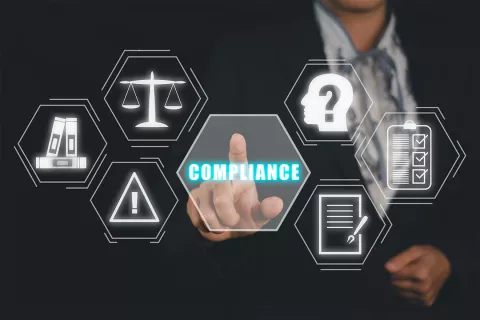
While placing your medical device on the European Union (EU) market, obtaining CE marking is a mandatory step. This is essential to assure the end user that the devices available in the market are both safe and effective for use. A critical component for providing this assurance involves a thorough examination of the technical documentation for the medical devices.
A medical device means any instrument, apparatus, appliance, software, implant, reagent, material, or other article intended by the manufacturer to be used, alone or in combination, for human beings for one or more specific medical purposes.
Devices categorized under Medical Device Regulation (MDR) 2017/745 Class I (except Class I sterile/ reusable surgical instruments/ measurable function) and In Vitro Diagnostic Regulation (IVDR) 2017/746 Class A are exempted from undergoing technical assessment through a Notified Body (NB). However, for Class IIa/IIb medical devices and Class B/C IVDs, it is mandatory to undergo a comprehensive technical assessment conducted by a NB, and the technical documentation will be subjected to sampling.
Now, let us quickly understand what medical device technical assessments’ documentation is and how it is related to the sampling of devices.
As mentioned previously, the evaluation of technical documentation plays a crucial role in the life cycle of medical devices. The meticulous review primarily takes place in the pre-market phase, where Regulatory authorities scrutinize manufacturers' comprehensive documentation to verify compliance with rigorous standards and regulations. This process is indispensable for acquiring or preserving market access.
The term "Sampling Devices" denotes a systematic procedure for choosing representative samples of medical devices for assessment. This sampling process stands as a vital element within the EU MDR technical documentation of a medical device.
Sampling Plan
The NB is responsible for preparing the sampling plan for the assessment of the EU MDR technical documentation for MDR Class IIa/IIb and IVDR Class B/C devices. It generally contains details about the devices under the certification scope, including their basic Unique Device Identification - Device Identifier (UDI-DI), the generic device group (for Class IIb), the combination of the generic device group, and IVP code (for Class C devices), or the category of devices (for Class IIa / Class B devices). Furthermore, it should specify the identifier for the relevant technical documentation, the scheduled assessment dates, and the status of these assessments.
Updates to the Sampling Plan
The NB should update the sampling plan whenever needed based on the sampling criteria, which are as follows:
- If the manufacturer makes any change in the product range during the validity period of the certificate.
- If the manufacturer applies for recertification.
Basis of MDR Sampling Devices
Considering the vast range of medical devices and IVDs, the NBs have a sampling approach to evaluate technical documentation. Instead of examining every device, the NBs assess the technical documentation for a representative group of devices based on their classification.
Device Range Coverage
For Class IIa and Class B IVDs, the NBs must go through the technical documentation for at least one device per category of the medical device. A category is a group of medical devices that share similar characteristics and intended uses. This means the NBs do not have to assess the Technical Documents (TDs) for every single device in a single category, but they must assess at least one of the devices to ensure that all devices in that category meet the Regulatory requirements.
For instance, in the case of Class IIa surgical instruments, the NB need not evaluate the technical documentation for each surgical instrument within this category. However, they are obliged to assess the technical documentation for at least one device to ensure that all surgical instruments within this category adhere to Regulatory requirements.
In the case of Class IIb and Class C IVDs, the NBs must evaluate the technical documentation for at least one device per generic device group. A generic device group comprises devices that share the same technical concept and serve similar intended purposes.
Now, let us take a case of molecular diagnostic test for a specific infectious disease. In this case, the NB would not necessarily need to scrutinize the technical documentation for every individual test within this category. However, the NB is required to rigorously assess the technical documentation for at least one representative device within this category.
Representative Sampling
The NB is responsible for ensuring that the sampled devices are proportionate to the total number of devices specified in the certificate. There is an expectation that 15% of devices from each category and each generic device group will undergo assessment during its validity period (up to five (05) years). There is an exception for the first certification cycle under the MDR/IVDR where the 15% may be decreased to a minimum of 5%.
Quantitative Sampling criteria
Before Issuance of QMS Certificate
The EU MDR technical file shall be assessed by the NBs based on the device range coverage, as mentioned above, for the device(s) selected, and these assessments are crucial for the final review before the issuance of the certification.
Sampling During Surveillance
After the issuance of the certificate, the NB continues to assess the technical documentation. At least one technical document should be reviewed each year. The NBs shall ensure to cover the entire device range during the validity period. Normally, the devices to be sampled after the issuance of the certificate will be evenly spread during the validity of the certificate. However, there might be a change in the number of reviews based on various reasons.
In certain scenarios, the technical documentation related to Post-market Surveillance (PMS) shall also be focussed during the review of the NBs.
Sampling during surveillance must include follow-up on change notifications and surveillance activities that are relevant to it.
Qualitative Sampling Criteria
Qualitative sampling criteria cover similarities in design, technology, manufacturing and sterilization methods, novelty of the technology, intended purpose, etc. These criteria must be individually considered when prioritizing the review of one device over another.
The NBs shall also consider additional criteria if required. The NB will guarantee that each device is sampled only once during the certificate's validity period unless specific vigilance concerns arise that necessitate re-sampling.
Evaluating the Technical Documentation
For the sampling of technical documentation assessments, the following aspects are considered for review:
- Depth of the Assessment: Irrespective of the risk class of the device(s) selected, the depth and extent of the technical documentation assessment will be the same. The examination focuses on all the aspects that allow a third party to understand the functionality of the device and ensure alignment with the Regulatory requirements of the EU MDR/IVDR.
- Applicability of the Assessment of the Technical Documentation: As part of the conformity assessment activities, the NB shall carry out the tasks that comprise the complete review of the technical documentation. The manufacturer will grant access to the technical documentation, and the NB will provide the manufacturer with a report on the technical documentation assessment.
- Additional Requirements for Specific Types of Devices: Under the MDR and the IVDR, there are specific types of devices that are exempt from sampling, which are as follows:
- Class IIb implantable devices, except for sutures, dental fillings, dental braces, tooth crowns, screws, wedges, plates, wires, pins, clips, and connectors, which are subject to sampling.
- Class IIb active devices intended to administer and/or remove a medicinal product where the devices are already subjected to clinical evaluation consultation procedure.
- Class B and C devices for self-testing, near-patient testing, and companion diagnostics.
- Reporting: The technical documentation assessment and its reporting should follow the principles established as per the EU MDR/IVDR requirements.
These elements collectively undergo a comprehensive review to ensure the device complies with relevant Regulatory standards.
The CE marking for medical devices mandates thorough NB evaluation/assessment for the EU MDR/EU IVDR technical documents for medical devices. The sampling plan, rooted in device classification and representative sampling, ensures compliance with rigorous standards. Evaluation criteria cover device usage, biocompatibility, clinical and performance aspects, risk management, sterilization validation, and design conformity. Exceptional scenarios permit deviations under specific circumstances, subject to detailed justification and the NB evaluation. Adherence to these processes is paramount, ensuring device safety and efficacy and instilling confidence in Regulatory authorities and consumers in the EU market. For more Regulatory support, reach out to us now! Stay informed. Stay compliant.









